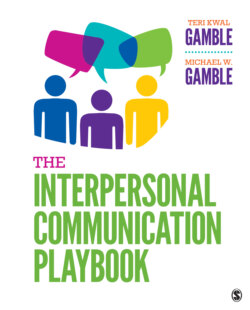Читать книгу The Interpersonal Communication Playbook - Teri Kwal Gamble - Страница 90
На сайте Литреса книга снята с продажи.
The Self in Individualistic and Collectivistic Cultures
ОглавлениеIn North American and Western European cultures, the word self reigns supreme, reflecting the importance individuals place on realizing their personal goals. Members of such individualistic cultures, in which individual identity is paramount, value uniqueness and personal identity; they tend to believe in themselves, seek to do their own thing, and shun conformity. In contrast, in the collectivistic cultures of Asia, Africa, and Central and South America, group goals are given a higher priority.33 Japanese parents, for example, typically refrain from lavishing praise on their children, believing that children who are overpraised are likely to end up being self-centered and not focused enough on the group’s needs.
For the members of collectivistic cultures, the self is not the center of the universe. For them, the group—not the individual—is the primary social unit. Where individualistic cultures link success with personal achievement, collectivistic cultures link it to group cohesion and loyalty. Members of collectivistic cultures gain a sense of identity through their group memberships, not by promoting themselves, as members of Western cultures are apt to do.34 Thus, while some of us have been raised to call attention to ourselves and develop ourselves at the group’s expense, others of us have been reared to avoid such behavior by nurturing the interdependent self instead.35
Reflect on This: Changes
Digital Vision./Digital Vision/Thinkstock
In his book Uh-Oh, philosopher and author Robert Fulghum presents his observations concerning when and how our self-conceptions change:
Ask a kindergarten class, “How many of you can draw?” and all hands shoot up. Yes, of course we can draw—all of us. What can you draw? Anything! How about a dog eating a fire truck in a jungle? Sure! How big you want it?
Do you like to act in plays? Yes! Do you play musical instruments? Yes! Do you write poetry? Yes! Can you read and write and count? Yes! We’re learning that stuff now.
Their answer is Yes! Over and over again, Yes! The children are confident in spirit, infinite in resources, and eager to learn. Everything is still possible.
Try those same questions on a college audience. A small percentage of the students will raise their hands when asked if they draw or dance or sing or paint or act or play an instrument. Not infrequently, those who do raise their hands will want to qualify their response with their limitations: “I only play piano, I only draw horses, I only dance to rock and roll, I only sing in the shower.”
When asked about the limitations, college students answer that they do not have talent, are not majoring in the subject, or have not done any of these things in years, or worse, that they are embarrassed for others to see them sing or dance or act.
What went wrong between kindergarten and college?
What happened to YES! Of course, I can?
